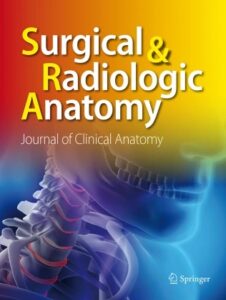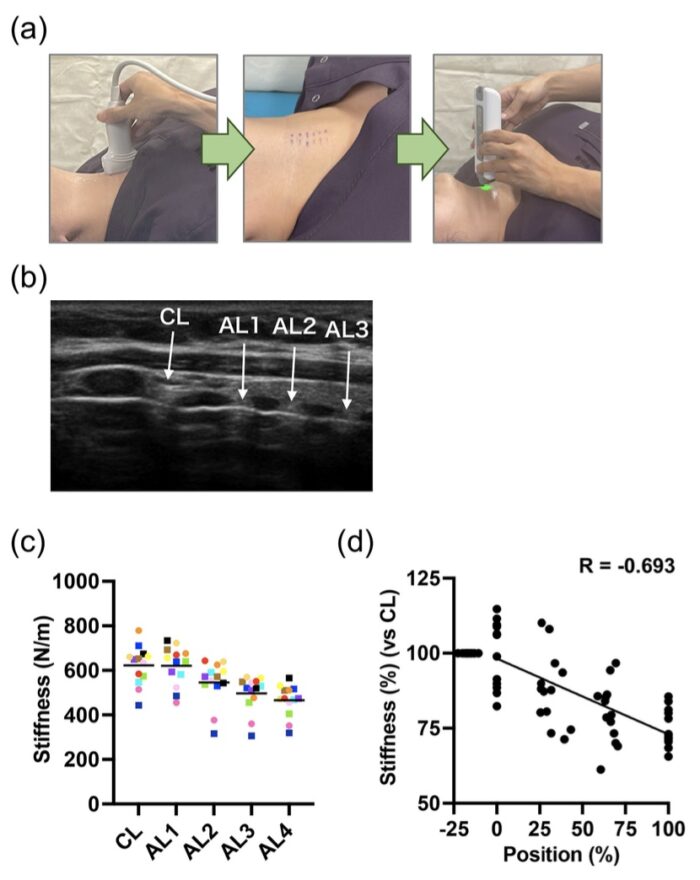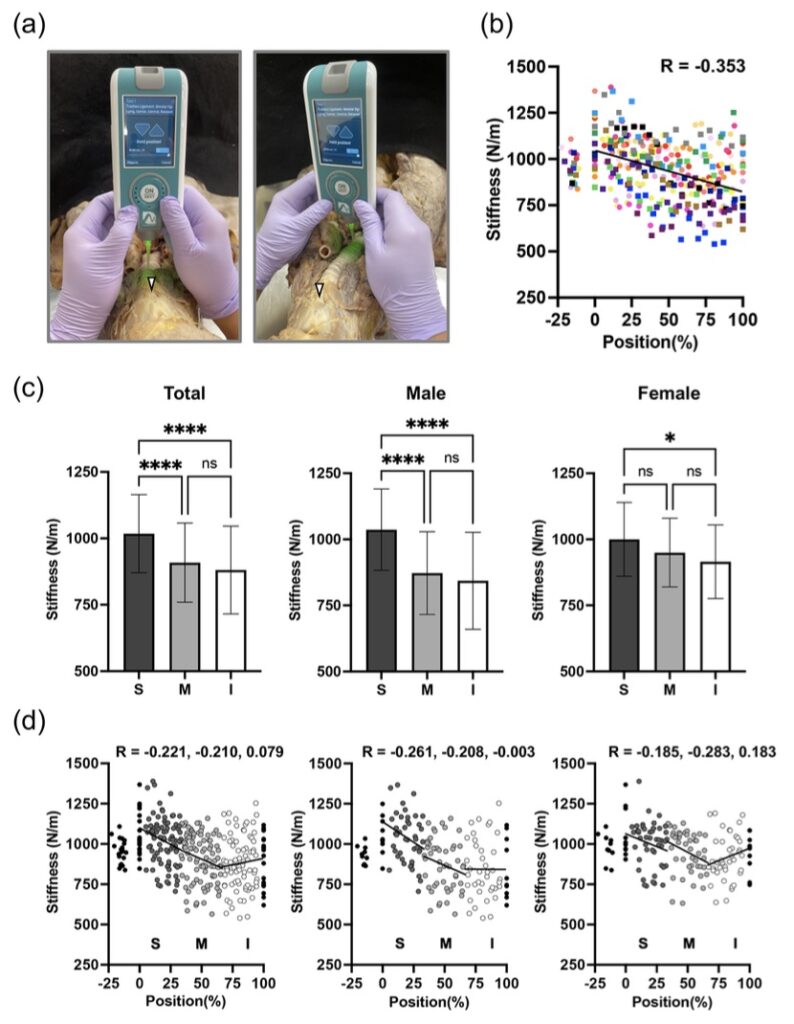Publications

Regional variations and sex-related differences of stiffness in human tracheal ligaments
Authors: Kaori Fukushige 1, Tomohito Okubo 1, 2, Xiyao Shan 1, Takao Takeuchi 1, Noriyuki Misaki 2, Munekazu Naito 1
Affiliations:
- Department of Anatomy, School of Medicine, Aichi Medical University, 1-1 Yazakokarimata, Nagakute, Aichi480-1195, Japan
- Department of General Thoracic, Breast and Endocrinological Surgery, Kagawa University Hospital, 1750-1 Ikenobe, Miki-cho, Kita-gun, Kagawa 761-0793, Japan
Journal: Surgical and Radiologic Anatomy - April 2024, Volume 46, Pages 877-883 (DOI: 10.1007/s00276-024-03361-6)
-
Field & Applications:
- Medical
- Normatives
- Validity
- MyotonPRO device provides a unique, reliable, accurate and sensitive way for the objective and non-invasive digital palpation of superficial skeletal muscles and tendons.
- Myoton Technology may become the gold standard in soft tissue assessment as an everyday diagnostic and monitoring device in medical practice.
Purpose: There have been numerous studies focused on the stiffness of tracheal cartilage. However, no research has been conducted specifically on the annular ligament, nor have any regional differences in the annular ligament been identified. The purpose of this study was to investigate the stiffness of the ligaments present between the thyroid, cricoid and tracheal cartilages.
Methods: The ligaments were identified in the cervical region of living subjects with ultrasonography. The stiffness of the ligaments was measured from the body surface using a digital palpation device (MyotonPRO). Since it is impossible to measure the entire trachea in a living subject, an additional measurement was performed on human cadavers.
Results: Both in vivo and cadaveric investigations found that the stiffness of annular ligaments decreased gradually from the superior to inferior parts. There was no difference in the stiffness between males and females in the superior part of the trachea. However, the stiffness of the middle and inferior parts was predominantly higher in females than in males. Furthermore, males showed significant differences in stiffness between the superior and middle parts, while females showed no significant differences.
Conclusion: These results reveal that there are regional and sex-related differences in the stiffness of human tracheal ligaments.

Figure 1. Measurement from the body surface of each ligament in the cervical trachea of living subjects. (a) The procedure of the measurements of each ligament. Ultrasonography is used to identify the ligaments, which are then marked with markers and measured with a digital palpation device. (b) An echo image in the longitudinal direction. (c) Stiffness of each ligament. (d) Value based on the cricothyroid ligament (CL). AL1: annular ligament between the cricoid cartilage and the first tracheal cartilage. AL2, AL3 and AL4: annular ligaments between the first and second, the second and third, and the third and fourth tracheal cartilages, respectively. R: correlation coefficient

Figure 2. Measurement of each ligament in the entire trachea in cadavers. (a) The measurement view (front and right oblique) of the ligaments. Arrowheads show the cricothyroid ligament (CL). (b) Stiffness of each ligament. (c) Regional and sex-related differences in ligaments of the entire trachea. (d) Stiffness of each part. R: correlation coefficient. S: superior part. M: middle part. I: inferior part. A p-value less than 0.05 is statistically significant. ns: not significant. * p < 0.05. **** p < 0.0001
Keywords: trachea, annular ligament, stiffness, sex-related difference
This is the first study to investigate the stiffness of the ligaments between the larynx and trachea using MyotonPRO on living subjects and cadavers. The results revealed that the stiffness of annular ligaments measured in the superior trachea of living subjects decreased gradually towards the inferior trachea. The cadaveric study also showed that the stiffness of annular ligaments decreased gradually from superior to inferior parts. In addition, the cadaveric study showed that there are regional and sex-related differences in the ligaments present from the larynx to the trachea.


